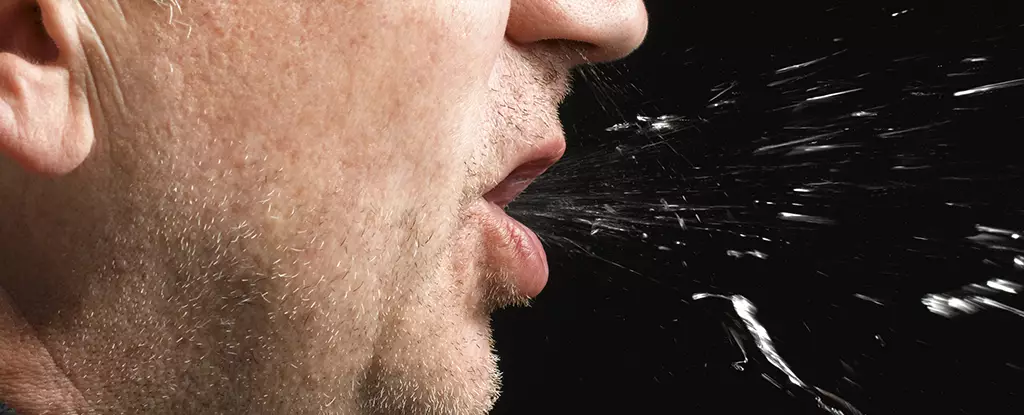In an era increasingly shaped by infectious diseases, understanding the dynamics of respiratory droplets is not just academic; it’s a matter of public health. Recent advancements in scientific experimentation shine a vital light on how far our spittle can travel and how this impacts the spread of infectious agents. Research has embarked on a journey to quantify these droplets, giving scientists the tools they desperately need to model transmission patterns accurately.
The significance of this research can’t be overstated. With COVID-19 still fresh in the global consciousness, the way droplets behave during various activities such as talking, coughing, and breathing informs public policy, health guidelines, and personal safety measures. This information is crucial for designing effective interventions aimed at mitigating the spread of viruses, not only for the current pandemic but for any respiratory illness that may emerge in the future.
Innovative Measurement Techniques
Employing state-of-the-art techniques like Interferometric Laser Imaging for Droplet Sizing (ILIDS) showcases the impressive advancements available in modern research methodologies. By utilizing high-speed cameras, researchers captured droplet dynamics in real time, providing a clearer picture of droplet size, speed, and behavior. This technology does not just offer a snapshot of current events; it paves the way for longitudinal studies that could reshape our understanding of respiratory illness transmission.
The experiment, which engaged 23 volunteers, underscores the art of scientific inquiry—combining the rigor of measurement with human variability. The insights gained shed light on previously ambiguous data and pave the way for more nuanced discussions about what constitutes safe practices in public spaces.
Droplet Size: A Key Factor in Transmission
One of the most intriguing findings from this research is the variance in droplet size during different activities. For instance, droplets expelled during talking and coughing ranged from a substantial 2 to 60 micrometers, a detail that reinforces the idea that not all respiratory events are equal in their potential to transmit illness. Breathing, on the other hand, produced droplets primarily in the smaller size range of 2 to 8 micrometers.
Interestingly, coughing elicited the fastest-moving droplets, which can remain airborne longer and travel further. This revelation is crucial for understanding the behaviors of ‘superspreaders’—individuals who are more likely to transmit infections due to their unique droplet profiles. This research illuminates the multifactorial nature of disease transmission, challenging us to reconsider our simplistic understandings of how infections propagate through populations.
The Role of Masks and Protective Measures
Another breakthrough the researchers highlighted was the impressive efficacy of masks in curtailing droplet dispersion. With tissue and surgical masks blocking between 74 and 86 percent of droplets during various exhalations, the empirical data strongly supports the continued use of face coverings in public health protocols. This reinforces not only the scientific rhetoric advocating for mask-wearing but also resonates with everyday experiences during the pandemic.
Yet, the variability among different participants raises important questions about individual risk factors and the effectiveness of personal protective equipment. Understanding this variability can lead to tailored advice for different demographics, highlighting the need for personalized guidelines that take into account factors such as face shape and mask adherence.
A Call for Broader Research and Enhanced Guidelines
The researchers emphasize that expanding this study to encompass a larger and more diverse group of volunteers is essential for understanding the totality of droplet transmission. Each individual’s facial structure, breathing patterns, and even their inherent infectiousness may contribute to varying outcomes in terms of droplet production and spread.
As the scientific community moves forward, it’s clear that further analysis will be needed to explore the link between individual characteristics and the effectiveness of precautions like mask-wearing. Multifaceted guidelines designed around these insights could significantly mold future health policies, potentially leading to decreased rates of infectious disease transmission globally.
This research acts as a critical foundation for future investigations. Its contributions reinforce why understanding the intricate behaviors of respiratory droplets remains one of the most essential aspects of public health.


Leave a Reply